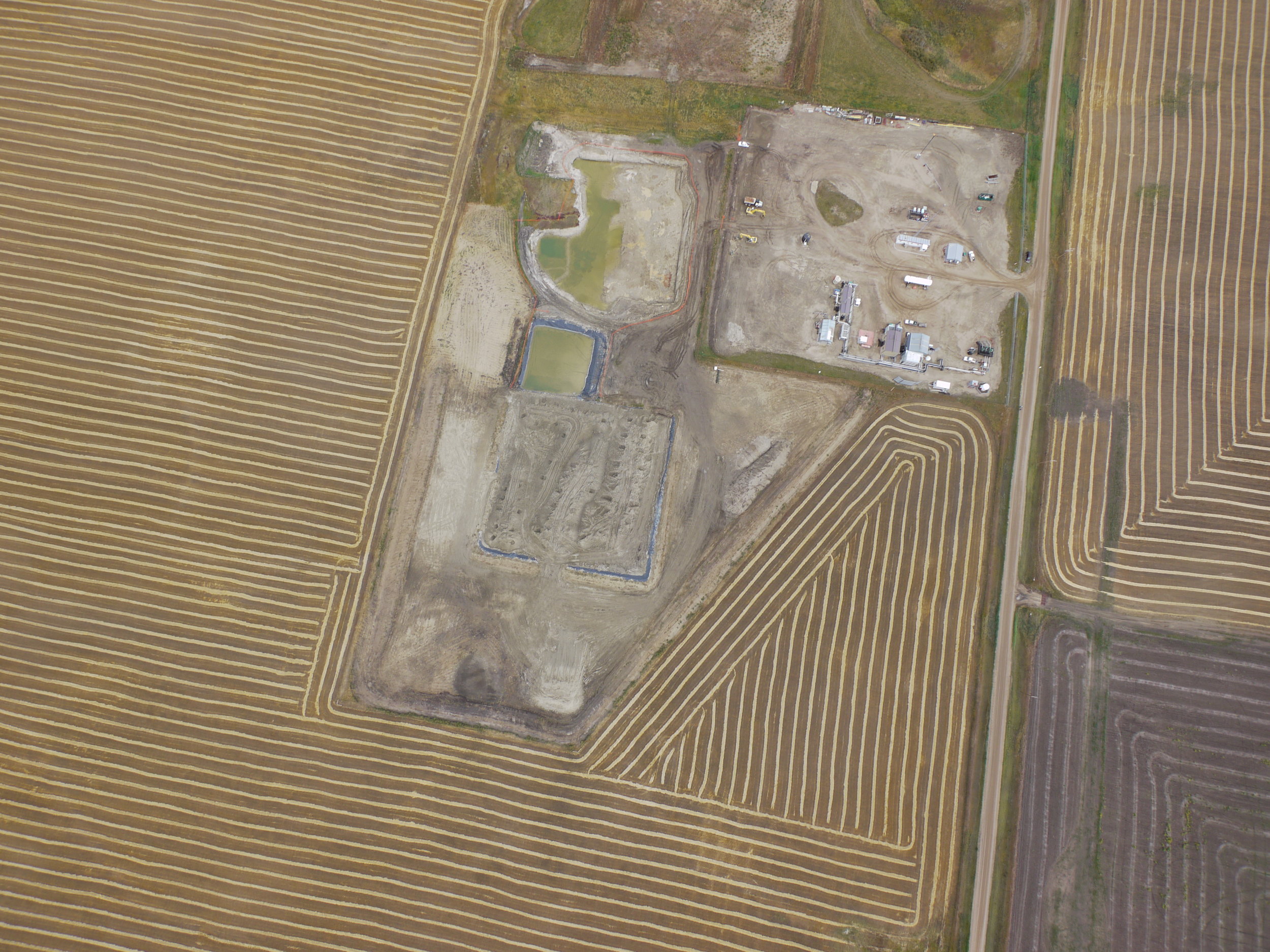Ex-situ Biopile - Gas Plant Soil Remediation
Light-end hydrocarbon (BTEX, F1) releases from underground storage tanks and associated piping at a central Alberta gas plant resulted in over 45,000 m³ of primarily off-site impacts to the unsaturated zone on solonetzic agricultural land. Numerous remediation options were explored; however, due to landowner concerns and the high volume of soils, excavation and ex-situ bioremediation using active aeration (also known as biopiles) of the impacted material was deemed to be the most suitable remediation option. Remediation work included construction of a lined treatment cell, run-off water retention pond, and work area fence, as well as stringing of topsoil, subsoil, and clean over-burden materials. The soil salvage and reclamation was complicated by the presence of the naturally saline soils (solonetzic). Excavation of the bulk of on-site impacts was restricted due to the presence of active infrastructure, therefore an air sparge/soil vapour extraction system was set up to create hydraulic control of potential off-site migration of residual impacts. Solstice was retained to manage and direct the environmental site assessment, remediation and reclamation work for this facility. At the conclusion of the project, the off-site impacts were fully remediated and returned to the excavation, and the full nine-hectare work area was reclaimed to productive agricultural land. The on-site impacts were managed to restrict migration off-site.
Major issues that Solstice addressed:
Landowner, cattle, worker and contractor safety
Complex ground disturbance management of the active facility
Regulatory support (Alberta Environment)
Primary liaison for a sensitive landowner
Management of multiple contractors
Reclamation of solonetzic (naturally saline) soils
Key services provided:
Project management
Environmental assessment
Remediation
Reclamation
Safety and ground disturbance supervision
Regulatory reporting & liaison with Alberta Environment





